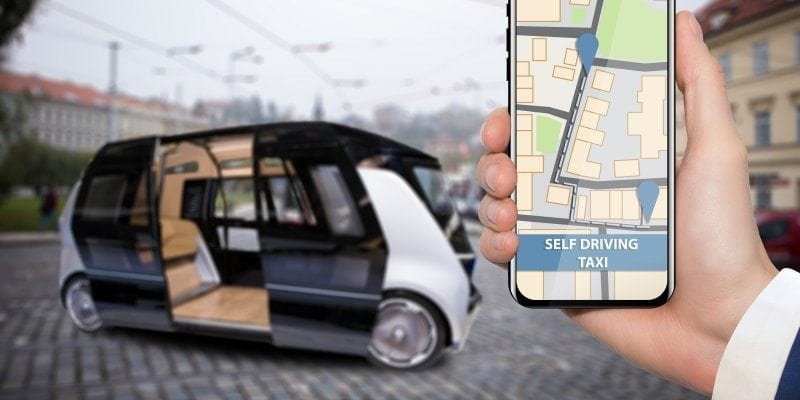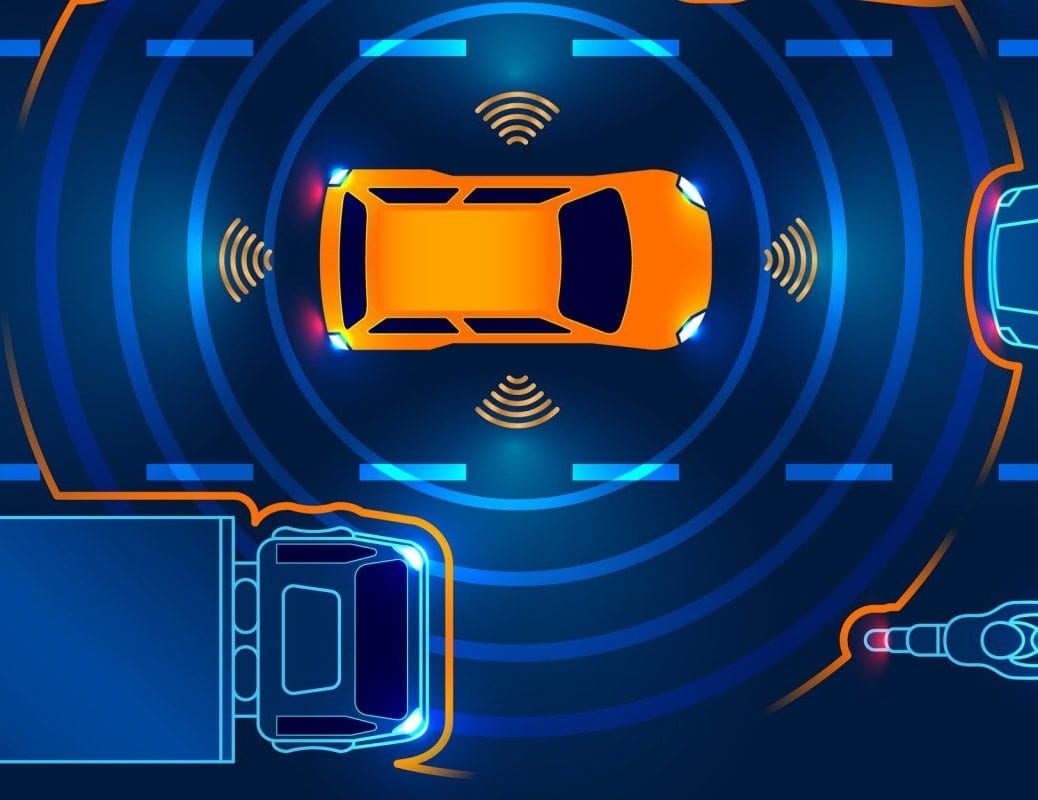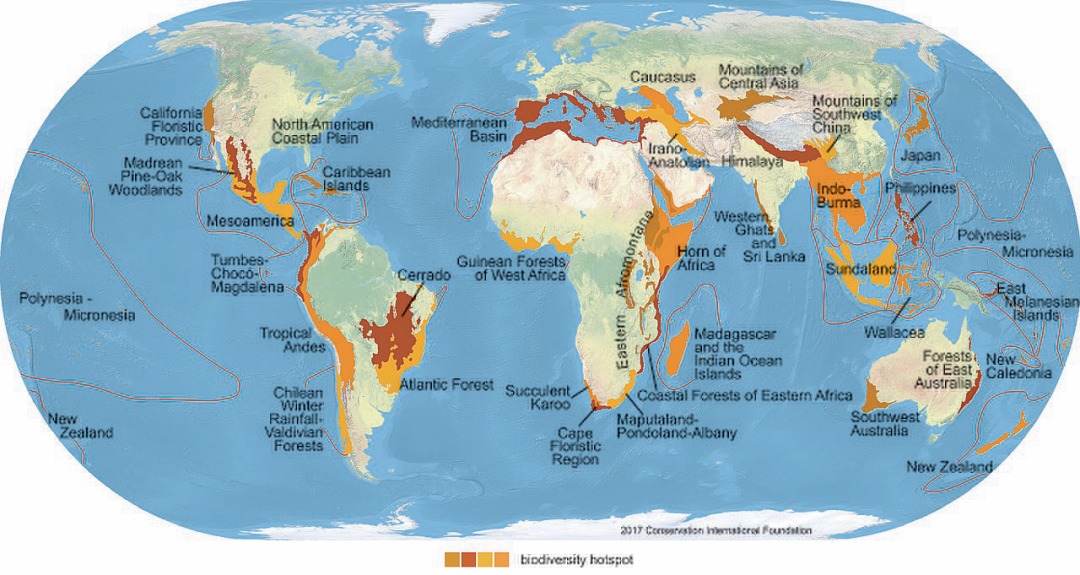Will autonomous vehicles (AVs) lead to fewer emissions? The short answer is most likely yes, but how that may come to pass is not so clear cut and involves many fascinating possibilities. There’s one thing I know for certain: When self-driving cars become mainstream, they will revolutionize U.S. transportation.
What warrants such a prediction? Our hyper-dependency on cars; that’s what. To own a car is as American as cherry pie; it is a status symbol that most enjoy, but partially out of necessity. America’s cities, which oftentimes look more like they were designed by spendthrift children than urban planners, are not located close to one another by most developed countries’ standards.
Dissecting how self-driving cars will shake up the automobile economy, and consequently what implications they have for emissions, is an investigation that would not be complete without a dynamic analysis and imaginative consideration of what the future might hold. Onwards!
Self-Driving Cars Will Redefine Car Use, But For Whom and When?
Can the mainstream public expect their privately owned cars to start driving them around anytime soon? No, that won’t happen for years to come.
Rather, the immediate beneficiaries of autonomous vehicle technology will be ride-hailing firms and public transportation for two main reasons: economics and practicality. Economics because the LIDAR sensors that AVs rely on to map out their changing environments are prohibitively expensive; practicality because well-defined areas and routes make AV tech implementation far safer and easier.
Consider this insight from The Economist’s special report on AVs that states that employing drivers accounts for “60% of the cost of ride-hailing.” Couple that with UBS’s prediction that automation, competition, and electrification could slash the remaining costs of ride-hailing by 70% down to $0.75 per mile. What you have left is a compelling case for for ride-hailing services to downsize their drivers and move to electric AVs. If these companies pass along their cost savings to customers, cheaper services would likely lead to greater adoption of ride-hailing services by more people, which would enable greater expansion of ride-hailing service territories, and what one hopes would be an expanding virtuous circle of positive societal and environmental impact, including fewer emissions.
With a “cheaper and more available” scenario enabled by electric AVs, it seems plausible that more people might choose to ditch their personal vehicles, which lie dormant for 95% of their lifetime, and supplant them with affordable and convenient rides from self-driving robo-taxis. At first, this may only be practical in the densely populated areas where such services are plentiful, but lower operating costs could encourage ride-hailing firms to expand their grids to more areas.

Self-Driving Taxi Future Concept. Photo Credit: scharfsinn86/Bigstock
We’ll Have Differently Designed Cars, and Fewer of Them
It is tempting to conceptualize self-driving cars as bearing striking resemblances to the automobiles to which we are already accustomed; steering wheel, gas and brake pedals, turn signal handles, and more. Semi-autonomous cars (those that have a driver in the seat who is ready to take over in case of the worst) will still resemble our current cars. However, fully autonomous cars will not be so restrained.
Cars that completely drive themselves won’t have to waste space on the formality of an empty driver seat. They will be able to use that space more productively. For example, it is not a stretch to suppose that ride-hailing firms will build self-driving cars with sealed compartments to improve ride-sharing between strangers (think UberPOOL with a touch of exclusivity). By reducing negative connotations associated with carpooling, chiefly that carpooling is uncomfortable and inefficient, AVs offer unprecedented opportunities for increasing ride-sharing. That means that fewer cars are needed on the road, which will decrease emissions substantially.
Unfortunately, fewer cars on the road could lead to a perverse unintended outcome: Less traffic congestion could mean that some people who previously sought out alternative means of traveling will choose riding in a vehicle over, say, public transportation or walking. This type of rebound effect is regrettable, but decidedly unavoidable. The magnitude could be mitigated with the right incentives and proactive policymaking (adjusted tolls on road use, and corresponding improvements in public transportation, for instance).
The Future of Autonomous Vehicles is Electric, Eventually
While an electric autonomous vehicle future would appear to offer a multitude of benefits to ride-hailing companies, customers, and the environment, it seems unlikely that all AVs will be fully electric in the early stages of their development and implementation. So what does the technology look like for AVs between now and then? According to several experts, hybrid technology may provide an excellent bridge and path forward.
James Farley, Ford’s executive vice president, recently made two interesting statements about the advantages that hybrid technology brings to AVs. First, he observed that hybrid-electric tech maximizes mileage to keep the vehicle on the road. Second, he noted that “hybrids help provide the significant amount of electrical power required for self-driving sensors and computer systems.” These two statements each are significant for different reasons. The first gives us hope that once pure electric vehicle (EV) technology becomes cheaper and more practical, it will be readily implemented into AVs. The second underscores why EV technology is well-suited to AVs. An article on GovTech.com elaborates further on this point, citing that EVs keep the mechanics uncomplicated, with only three components as opposed to the 2,000 tiny pieces in an internal combustion engine. What’s more, there are the intuitive benefits of it being far easier and safer to recharge an unmanned car than for an AV to fill itself up at the gas station.
How will all of this impact emissions? A increased demand for electricity will spur the pursuit for clean, renewable energy, and will decrease reliance on fossil-fuels as the number of traditional cars on the roads shrinks. City energy grids will have to be redrawn keeping in mind AVs and the amount of clean energy they demand.
The Bottom Line: Emissions Will Be Reduced
The complexity of predicting autonomous vehicles’ future in society mirrors the difficulty of estimating how much AVs will decrease overall emissions. Chunka Mui, a contributor to Forbes, cites a study by the Texas A&M Transportation Institute estimating that the traffic reduction from AVs alone could reduce fuel consumption by 1.9 billion gallons per year. He also shows data that suggest a 90% reduction in cars is possible with a corresponding increase in car utilization from 5-10% to 75+%.
It is extremely likely that fewer cars will need to be manufactured, and that fewer cars will need to be on the road. It also seems apparent that the vehicles that are on the road will be either partly or entirely electric, and that EV technology will be embraced more as it becomes better, faster, and cheaper. For all these reasons, we can reasonably expect the future of transportation to be far cleaner than it has ever been.
Top Image Photo Credit: Andrey Suslov/Bigstock
- Will Autonomous Vehicles Lead to Fewer Emissions? - May 10, 2022
- Biofuel: Mitigating One of Renewable Energy’s Biggest Weaknesses - May 10, 2022
- Is a Career in Environmental Management Right for You? - May 10, 2022











